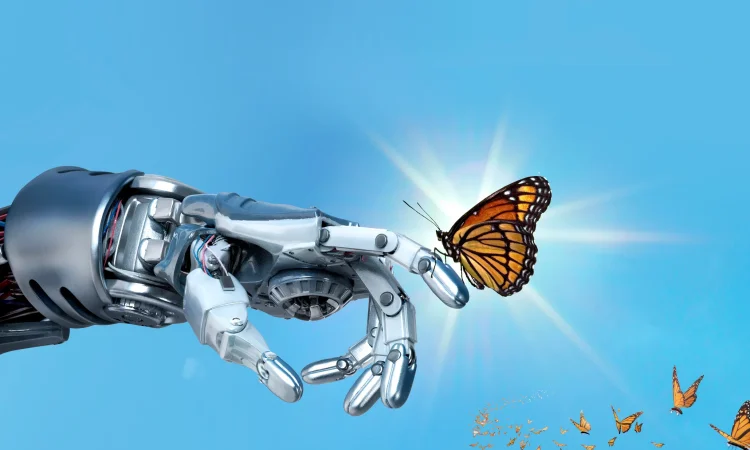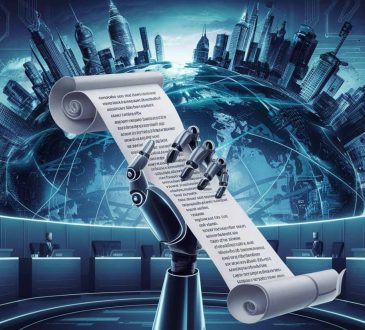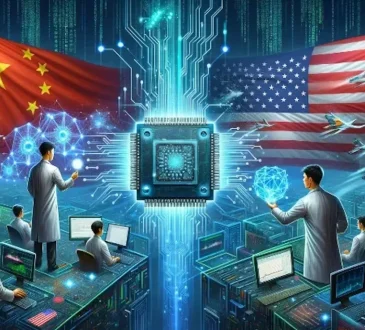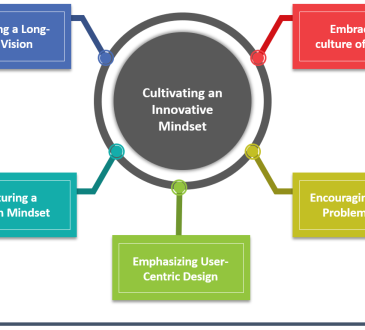Enter Macroscope: An AI Helping You Understand the Code and Debugging Bugs

The complexity of codebases in the software world continues to increase rapidly as new features are added or updated. Teams often manage millions of lines of code written in many languages—sometimes by different developers over years. In this world, finding and fixing a bug is like searching for a needle in a haystack.
Enter Macroscope, the latest AI-based tool designed to help developers navigate and comprehend their codebase all at once while quickly detecting and fixing errors.
A Code Helper of a New Kind
Macroscope is different from traditional code-completion or auto-completion features.
Rather than simply focusing on helping you write new lines of code, it zooms out—hence the name—to provide a bird’s-eye view of your existing code base.
This change in perspective is important because most of a developer’s time isn’t spent adding new features but maintaining and debugging an existing system.
Unlike classical debugging tools that rely on static analysis or simple pattern matching, Macroscope uses state-of-the-art machine learning models trained on extensive sets of open-source and enterprise code. These models allow it to grasp the structure, logic, and purpose of various project sections.
By doing so, Macroscope can spot subtle problems that even experienced engineers might overlook—such as complex dependency conflicts, performance bottlenecks, or tricky edge cases in algorithms with many parameters.
How Macroscope Works
At the core of Macroscope is an NLP-based AI engine designed to:
- Perform complete ingestion of repositories.
- Identify relationships across functions, classes, and modules.
- Develop a semantic model of the code.
Once a project is indexed, developers can access Macroscope using natural language queries.
For example, a developer might ask:
- “Where was the authentication token validated?”
- “What part of the code is responsible for payment retries?”
The AI immediately highlights relevant passages, sparing hours of manual searching.
Fault finding is where Macroscope excels. It flags potential issues before they reach production by constantly monitoring code changes.
If a new pull request introduces a variable that might cause a null reference error, Macroscope warns the team and can even propose fixes. In certain contexts, it can create a patch file and explain why it made the change, allowing developers to decide whether to merge it.
Reducing Technical Debt
One of the persistent challenges in long-term projects is technical debt—where quick fixes or outdated design decisions begin to slow development and increase maintenance costs.
Macroscope addresses this by:
- Highlighting areas of code that are overly complicated, under-documented, or out-of-date.
- Offering actionable suggestions for refactoring.
By revealing these pain points, the tool encourages teams to refactor in small steps, preventing future bugs and keeping the codebase clean and productive.
Collaboration Made Easy
Large development teams often struggle with onboarding new developers and maintaining clarity about each member’s work.
Macroscope acts as an ever-present mentor, providing immediate answers about why a module is written a certain way or why specific architectural choices were made.
Key collaboration features include:
- A natural language interface that allows even non-developers—such as product managers or QA staff—to query how a feature works or where specific data flows begin.
- Integration with version control systems like Git, enabling real-time analysis of pull requests and context-aware feedback.
- Suggestions that fit seamlessly into existing workflows with minimal disruption.
Safeguarding Security and Privacy
With any AI tool that peers deeply into proprietary code, security and privacy are critical.
Macroscope’s developers have prioritized strong safeguards:
- The system can run entirely on-premises, ensuring sensitive code never leaves a company’s environment.
- Data is protected by encryption and strict access controls.
- AI models operate without sending proprietary code to external servers, reducing the risk of intellectual property exposure.
Early Success Stories
Early adopters report impressive productivity gains:
- A mid-sized fintech company reduced average bug-fix times by 30 percent within three months of implementing Macroscope.
- A large e-commerce firm discovered and resolved a hidden performance bottleneck that had affected their system for years.
Developers in both cases praised the ability to ask questions in plain language and receive immediate, context-aware answers.
The Bigger Picture for AI in Development
Macroscope arrives at a time when AI-assisted development is becoming mainstream.
While tools like code completion and boilerplate generation are already common, Macroscope belongs to a new category—focused not on writing code, but on understanding it.
This distinction is significant because software maintenance consumes the majority of a project’s lifecycle costs.
By targeting comprehension, analysis, and automated bug fixing, Macroscope addresses the most resource-intensive aspect of development.
Challenges and the Road Ahead
Despite its promise, Macroscope is not a magic bullet:
- AI systems may misinterpret context, especially in highly specialized domains.
- Developers must review and approve every suggested fix.
- Integrating a new tool involves a learning curve, though early users find the natural language interface intuitive.
Looking forward, Macroscope’s creators plan to:
- Add predictive maintenance features, forecasting which parts of the code are most likely to break.
- Integrate more seamlessly with CI/CD pipelines to run checks automatically before deployment.
A Glimpse of the Future
For developers, Macroscope offers a glimpse of a future where AI is a true partner in maintaining and evolving complex systems.
By helping teams understand their codebase more deeply and resolve bugs faster, it frees human developers to focus on creativity, architecture, and innovation.
As software increasingly drives progress across industries, maintaining high-quality, reliable code is critical.
Macroscope suggests that the next big leap in programming productivity may not come from writing more code, but from truly understanding the code we already have.




